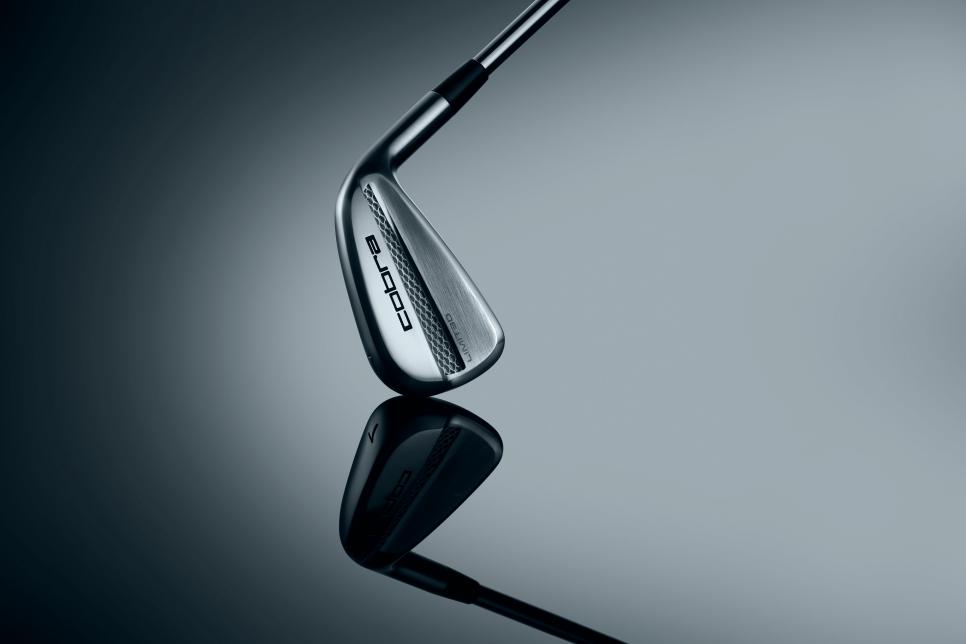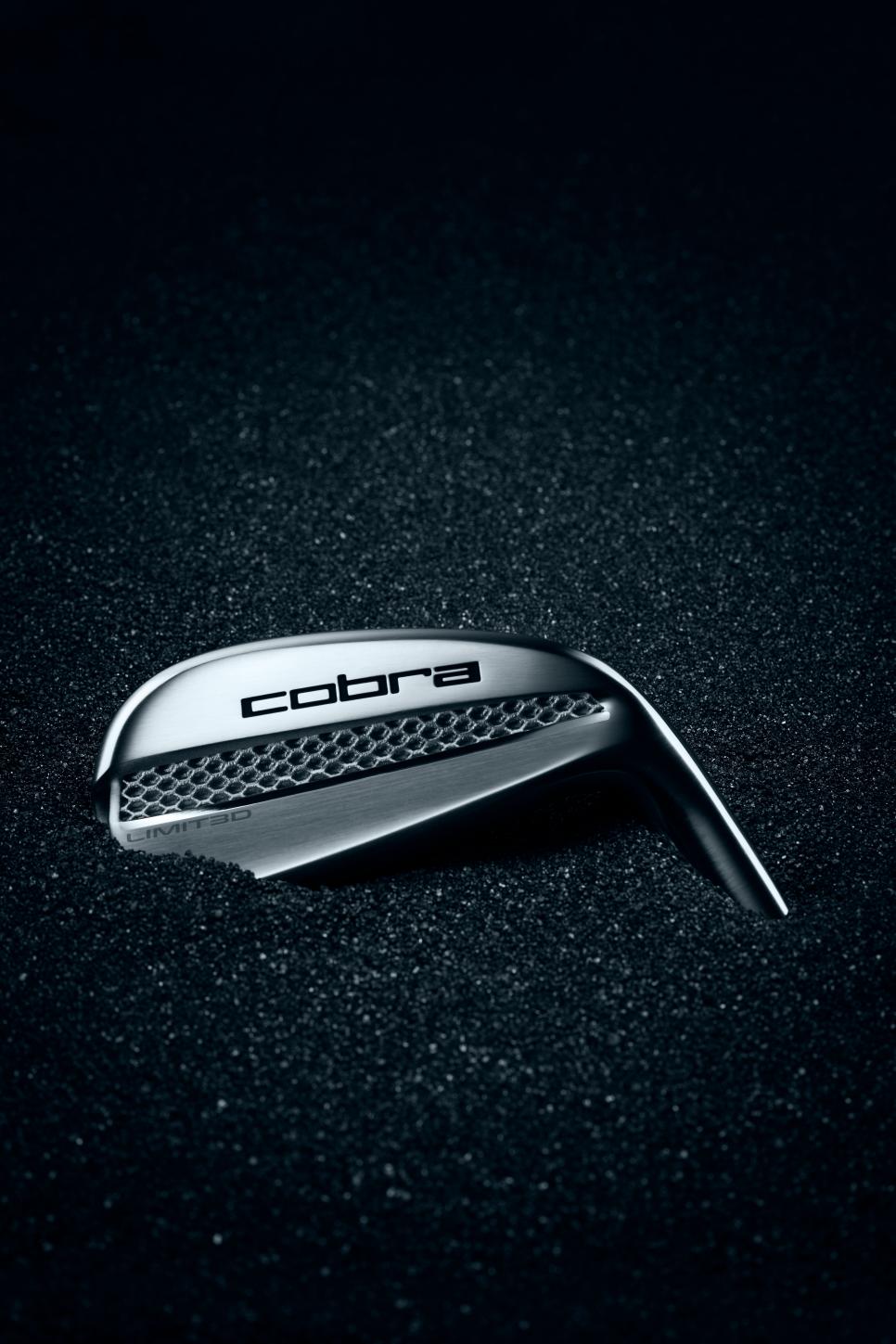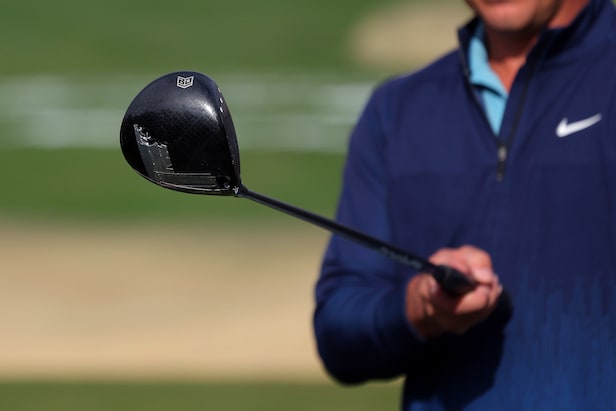Cobra LIMIT3D irons: What you need to know about the first commercially available set of 3D printed irons – Australian Golf Digest

- by Admin
- May 14, 2024

WHAT YOU NEED TO KNOW: The new Cobra LIMIT3D irons will break new ground as the first commercially available clubs made completely through additive manufacturing, or what’s known as three-dimensional (3D) printing. In this case, the process creates essentially a hollow iron where the inside section is an intricate steel lattice structure that joins the front (face) and back of the head. This saves as much as 100 grams of mass that is positioned as tungsten weight pads in the low heel and low toe. The result is an iron with the compact shape of a players iron with the forgiveness of a game-improvement design, all with the intention of maintaining the single-piece solid feel of a forged blade.
PRICE: $3,000. 4-iron through pitching wedge. Limited quantity of 500 sets, available June 7.
3 COOL THINGS 1. What is 3D Printing? Traditionally, irons have been produced in two common ways. Either they are forged where huge presses smash heated metal into a specific shape, almost always made of a single material (carbon steel). Or irons can be investment cast, where a liquefied metal (again usually steel) is pored into a mold to achieve a certain shapes and thicknesses. The former generally creates a more consistently solid feel due to the thicker structure of the one-piece design, while the latter method generally creates more opportunity to create thinner faces and cavity-back designs, leading to more ball speed and more saved mass for more perimeter weighting to create more forgiveness (higher moment of inertia). 3D printing has been around for decades as a prototyping tool, and Cobra’s team has used it in several instances to create lightweight polymer structures within its King 3D Printed putter lineup. As well, the company has produced more than 40 3D printed prototype clubheads that have been used by some tour players, including wedges played by Rickie Fowler.
In simple terms, the process works not much differently than the way a laser printer sprays ink onto a piece of paper. What’s different, of course, is that instead of ink creating letters and numbers, in 3D printing the laser uses a powder to build layers of a design on top of each other with each pass. It’s like each clubhead is growing from nothing to a fully formed iron. Specifically, the process for the Cobra LIMIT3D irons is called direct metal laser sintering.
While creating prototype designs or even polymer structures within a commercial offering is one thing, manufacturing a full set of irons with this kind of process for widespread availability was not a practical consideration, financially or otherwise. Or at least it wasn’t until now.
“When you look at those two traditional methods, you say, well, forging is great, it has its purpose, and casting is great, it has its purpose, but if you want to do something different, how can you?” said Mike Yagley, Cobra’s vice president for innovation and AI. “Forging was great but there were things you couldn’t do with it that precipitated the need for casting, things like undercut cavities, thin faces, wide bodies, hollow designs. So that was casting’s advantage, but if you really want to do something different, how do you do it? Well, 3D printing has precipitated the ability to do some things that those two cannot do.”
That new thing is what makes the LIMIT3D irons so different, essentially an iron design that combines the elements of feel, solidity and the compact shaping of a forged, single piece design with the forgiveness of a cavity back.

2. How is it used here? The assumption here might be that a hollow iron is hardly a new idea. Removing weight from the middle of an iron creates more mass to redistribute to the perimeter, just like we’ve seen for the better part of a decade. Of course, to make that kind of a design feel good often required some kind of filling to control unwanted vibrations. So why go to the trouble of 3D printing? Because while the interior of this iron is not solid metal like on a forging, it is a weight-saving structure that is still metal, in this case the same 316L stainless steel powder used to “grow” the main body of the LIMIT3D iron. Using 3D printing allows the interior of this iron to both save weight and enhance feel, said Ryan Roach, Cobra’s senior innovation engineer.
“One of the key advantages of additive manufacturing is the ability to execute what we call ‘lightweighting,’ or taking weight out of the structure,” Roach said, describing the interior of the iron as a lattice structure that joins front to back. It’s almost like a series of ultra-fine I-beams, although the structure of each cell of the lattice work is like a tiny dodecahedron. Crudely, when viewed as a separate element, the lattice work appears to be like an ultra-strong, ultra-stiff, ultra-dense chicken wire that connects front and back.
“Putting that lattice that touches from the front to the back makes it basically almost as stiff as if it was solid, which then gives them that blade-like feel, blade-like performance,” Yagley said. He compared a 3D printed section of the LIMIT3D iron with a similar sized section of a forged iron and noted how the LIMIT3D weighed 35 percent less. “That’s why it’s critical for it to be as stiff as the body and connected. It’s not going to behave the same [if it were a polymer], and the reason is because the lattice is essentially the same material as the body and the face.”

3. What makes it better? Forgiveness is an interesting concept in an iron with a shape designed to appeal to better players. In other words, you can make an iron more forgiving simply by making it bigger. As well, you can thin out the face for more deflection and ball speed and use a heavy, dense material like tungsten pushed to the perimeter to increase stability in similar-sized iron. What makes the LIMIT3D iron interesting is that its only intention is forgiveness with feel. In the mind of Cobra’s team it’s better because it allows them to design a more compact iron that’s more forgiving. That means the LIMIT3D iron uses a lower toe height, shorter blade length, narrower sole and thinner topline than a comparable iron, like for instance the King Tour players iron.
For Cobra’s team to innovate within the lattice structure, they benefited from a computer-assisted design technology firm called nTop, whose software made it easier to see in real time how every little tweak of the lattice structure could make the head more functional and more forgiving.
“So we’re able to have the ability to analyze structures with lattice in them, which is kind of a chore if you’re trying to do it through the software that we normally would use because there’s a lot of element sizes, and everything is very detailed,” Roach said.
The upshot of the LIMIT3D is that according to the company it has the lowest center of gravity of any of Cobra’s current players or players distance irons, with the highest forgiveness (MOI, a measurement of the stability on off-center hits). Its internal testing showed both more distance and tighter dispersion than Cobra’s current King Tour irons. More remarkable is that such a design can now be a real consumer product, Yagley said.
“Ryan and his team have been pounding the street working with vendors, material suppliers and saying, ‘OK, how can we get this to the point where we can actually afford to do this and sell them?” Yagley said of the LIMIT3D set, which will sell for just over double the price of a set of King Tour irons. “If we did this 10 years ago, the price might literally be $30-50,000 for a single set.”
This article was originally published on golfdigest.com
The Latest News
-
December 23, 2024PPHG achieves GSTC multi-site certification for all its Australian properties – Travel And Tour World
-
December 23, 2024Championship three-peat reward for ‘clinical’ Aussies | cricket.com.au
-
December 23, 2024Australian tennis star Purcell takes on voluntary provisional suspension for breaking anti-doping rules
-
December 23, 2024‘Back myself and be fearless’: Konstas lives by mantra in first hit | cricket.com.au
-
December 23, 2024Wimbledon champion accepts ban for anti-doping breach just months after winning US Open





